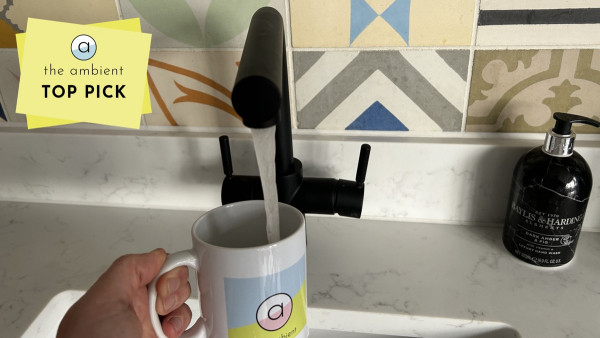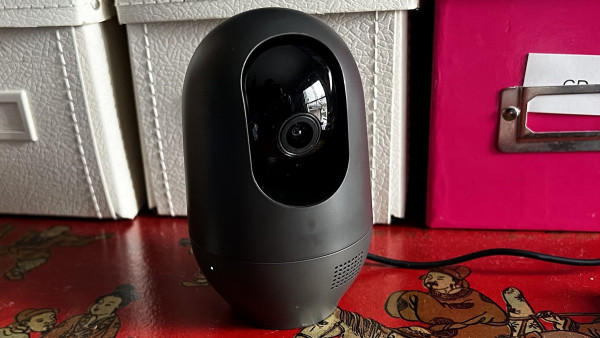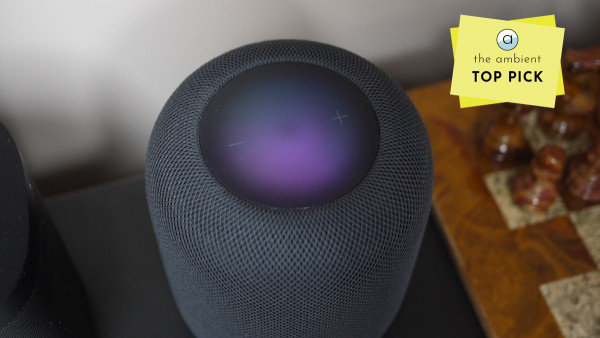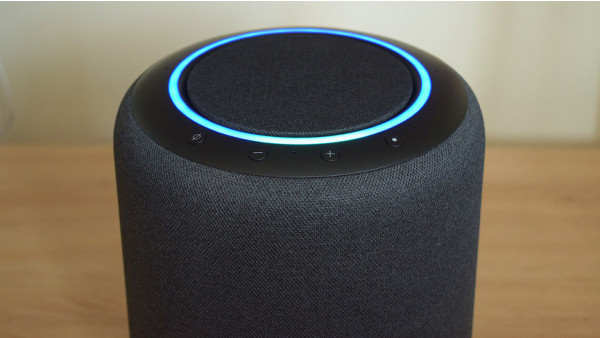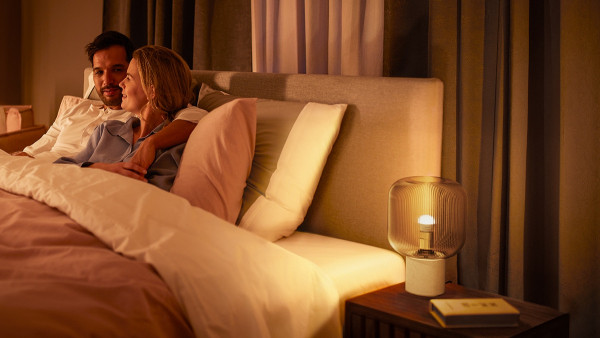Amazon Echo Studio review (2nd generation): Alexa speaks to audiophiles
6 min read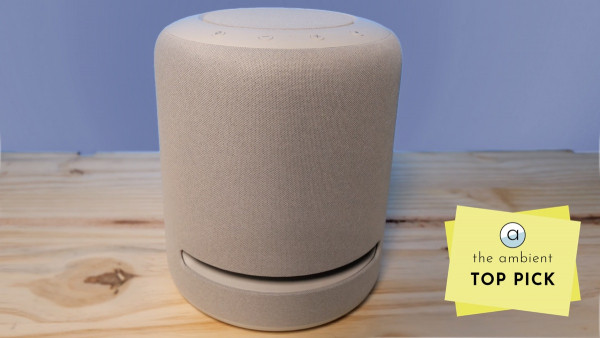
Amazon has spent years telling people how amazing its speakers are for listening to music. But, at least for a couple of years, this was all a big bluff.
Bezos Inc. did, however, introduce a smart speaker with audio power to support those claims in late 2019. The Amazon Echo Studio.
Reviewers praised the Echo Studio’s big sound. It was Amazon’s first attempt to offer a smart speaker capable of competing with the HomePod or the Sonos speakers.
Fast-forward a few more years, and we have the 2nd generation of Echo Studio. It looks the same as the first but is packed with improvements.
The price remains the same at $199.99/PS189.99, which is a good chunk ($50/PS60) less than the Sonos Era 100 that was just announced. However, it goes up to the more expensive ($449/PS449) Sonos Era300 smart speaker as it’s called a’spatial-audio’ smart speaker.
It may not have the hardware necessary to compete with Sonos’ newest flagship, but it checks many of the same boxes at a price less than half that.
The price is such that it could encourage people to buy two Echo Studios and use them in tandem. They can also be connected to an Echo Sub to add a bass kick.
Here are the best Alexa speakers
The Studio takes advantage of Amazon Music Unlimited The high-definition level includes Dolby Atmos tracks.
What is the value of 3D audio? Our full review is below.
Amazon Echo Studio: Design & Setup
Make sure you have plenty of space for the Echo Studio. This smart speaker is big and powerful. It measures just under 8 inches high and almost 7 inches wide.
It has a cylinder design but, as you can see from the dimensions, it is much more rotund that Amazon’s “regular Echo” speakers. It looks like the HomePod after it has consumed too many protein drinks.
It’s not ugly, but neither is it very attractive. It is one of the largest smart speakers compared to other models, even bigger than the HomePod or the Sonos One.
The new model in glacier white is slightly prettier than its bulky black-charcoal predecessor, but apart from that it’s almost identical.
What you cannot see is more important: three 2-inch speakers for midrange, a 25mm tweeter that fires forward and a 5.25-inch bass speaker that fires downward.
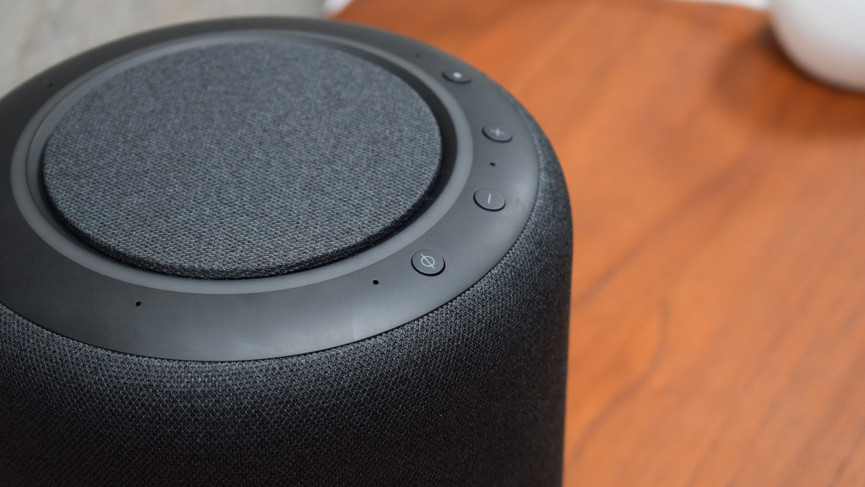
This is also an Alexa speaker, with the green-blue Alexa rings that light up when the assistant listens.
The roof of the studio has four buttons: two volume controls, a microphone-mute switch, and one to wake Alexa.
You can set up Studio by following the Amazon Alexa App’s usual steps: locate it, give it a name, and assign it to a specific room. It’s very easy to set up (as long as you have an Amazon account and the app is running); our Studio was ready in just a few minutes.
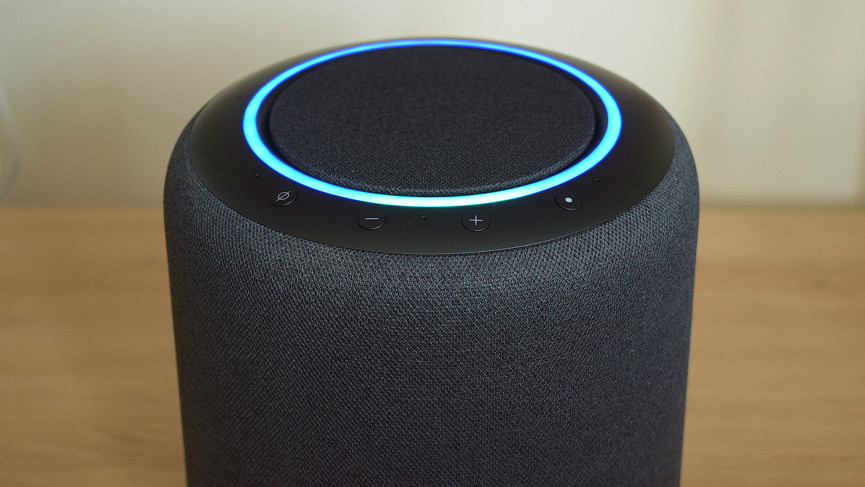
Amazon Echo Studio: Features
The Echo Studio is essentially a regular Echo with a massively improved acoustics. This means that you can use Alexa to ask for your normal queries and commands. It also means integration with your smart home devices. It is a first party speaker and will get all new features before any other third-party speakers.
The Studio experience is divided into two levels. You can choose from many streaming services, including Spotify, Apple Music and Deezer.
Alexa can be used to control playback on Studio via your phone.
You can choose Spotify as your default service if you are familiar with Alexa’s DJ capabilities. This means that instead of saying “Alexa play Grizzly bear on Spotify”, you can say “Alexa play Grizzly” and not specify the Spotify name. “
If you don’t use a music service compatible with the Echo Studio, you can also connect via Bluetooth.
Spatial audio is the second level of the Studio listening experience and has been improved with the 2022 Echo Studio follow-up.
Amazon Music Unlimited gives the Echo Studio 2 a better custom-built spatial processing technology, via a new extension of frequency range. It also supports Dolby 360 Reality Audio and Dolby atmos.
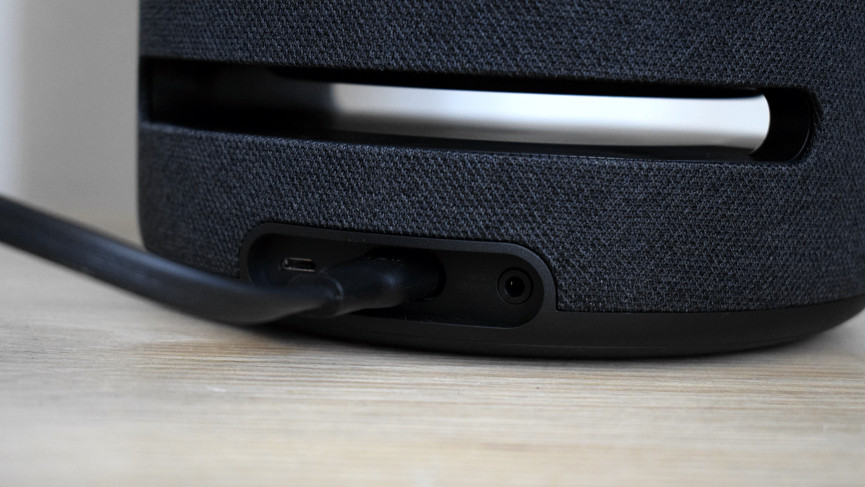
The built-in Zigbee Hub is another nice feature that has been carried over from its first version. This allows you to connect compatible Zigbee devices directly to the Studio instead of via a separate bridge/hub. Philips Hue light bulbs, for instance, can be controlled directly by the Studio.
The Echo Studio can also play a major role in your Matter intelligent home as it is both a matter controller and Thread border router.
It can be used as a Dolby-Atmos speaker on your TV but only if you have a Fire TV device (this is Amazon, after all). Two Echo Studio speakers can be connected to an Echo Sub, for a fully-loaded home theatre setup.

Amazon Echo Studio: High-quality 3D audio and sound.
How does it sound? This is by far the best-sounding Echo, but it’s not quite up to Sonos’s level yet.
The Echo Studio has a great sound but it’s not the best at low-ends or high-ends. The Echo Studio won’t blow you away with its bass, but you will be able to hear details that you have never heard before.
It’s time to discuss spatial audio. This is one of the key features that Amazon has based the Studio.
This format should give you a sense of being immersed in the music and the instruments around you. Amazon makes this possible by using both Dolby 360 Reality Audio and Dolby Atmos music codecs.
The more important question is: Does the 3D work? It does, but it is not as noticeable as we expected. It really depends on the song’s mix and how it has been mastered for 3D.
A Sonos executive told us at a briefing on the Era launches that 80 of the 100 top Billboard tracks are available in Dolby ATmos.
The new Studio produced a slightly better sound for Elton John’s Rocket Man, but Lucy In The Sky With Diamonds was a clear improvement over the stereo version. Marvin Gaye’s What’s Going on also produced a “more surround” sound.
The separation can give a song a greater sense of scale when it is used correctly, but some tracks that we tested felt overproduced with their 3D mixes. It really depends on the track.
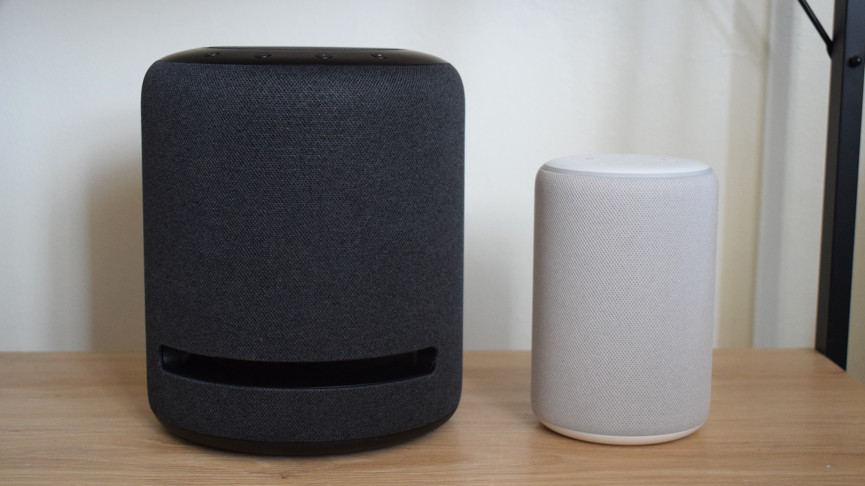
We still believe there are many good reasons to purchase the Studio. You can get lossless audio quality if you pay for Amazon Music.
Studio supports CD-quality 16-bit audio at 44.1kHz or “Ultra HD”, 24-bit audio with sample rates of up to 192kHz. Both sound better than the average MP3, like those you find on Spotify.
The Studio can also adjust acoustically. The Studio can also tune itself by using the seven microphones at the top. They are Alexa’s ears, but they also allow it to analyze the sound bouncing in the room.
This is the same feature that’s found on the HomePod or Sonos One. You don’t need to worry about the placement (although we recommend an open space if you can).
We also tested the Studio with the HomePod and Sonos One, Sonos Five, and Sonos Move. It’s audio quality is superior to Apple’s speaker, and most people would say it’s on par with Sonos One.
The Studio’s main flaw is the bass response. It can be overwhelming and feels less tight overall than Sonos speakers.
The main question that most people are going to ask is whether they should choose the Studio or a Sonos. Studio is a better smart speaker if Alexa has already been installed in your home.
Amazon’s competitors should consider the price of this smart speaker more important than 3D audio. This makes it all the more appealing.


